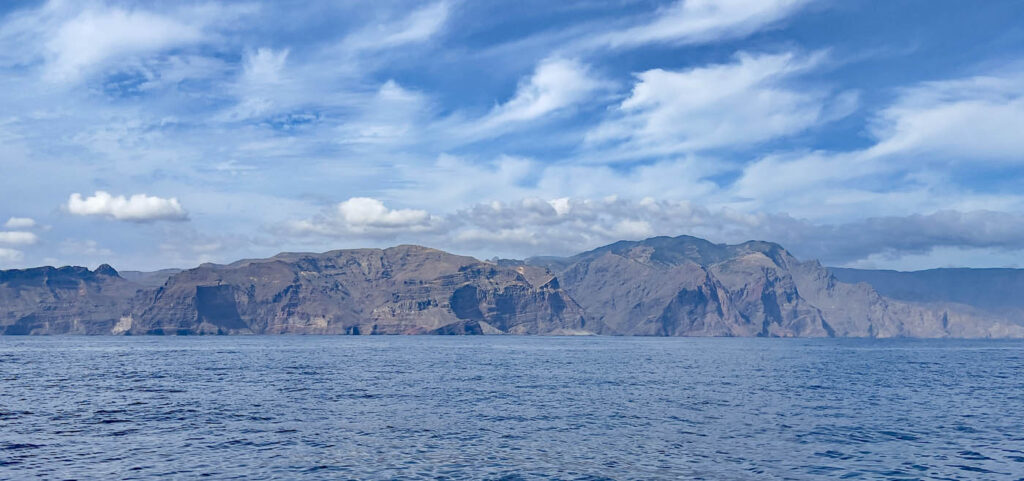
We departed Madeira ten days ago on a 580 nautical mile passage to La Gomera in the Canary Isles. Happily the seas were calmer, giving us the chance to try a few downwind sailing options on our passage. It took just over 50 hours thanks to a surprisingly adverse current but we enjoyed the sunny days and stunning nights lit by an almost full moon. We made landfall at San Sebastián La Gomera, the main port, and celebrated with cold beer and a delicious lunch of squid, sardines and tuna. We have decided to spend some time here as the island, whilst quiet and untouristy, is famous for its hiking trails.
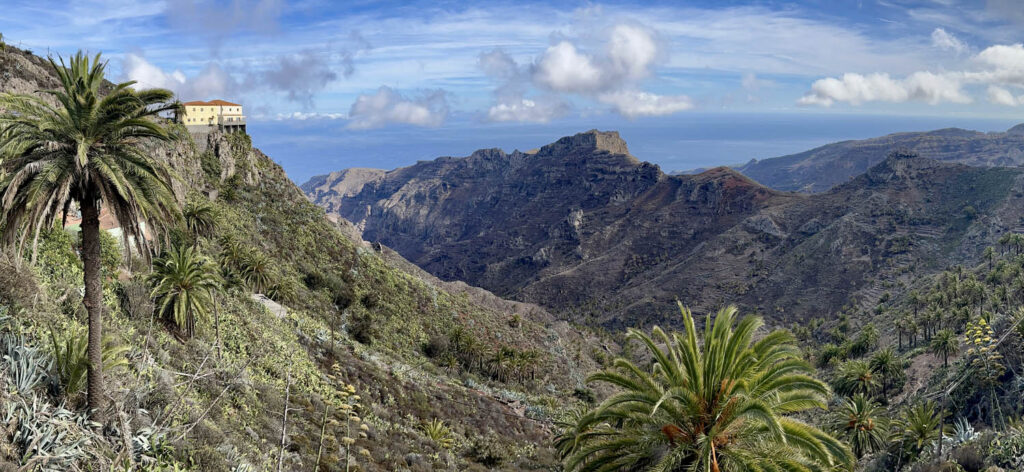
Having described Madeira as an island of contrasts, La Gomera is at the next level! It is one of the most verdant of the Canaries as it lies to the west of the bigger islands and captures more rainfall. However, recently there have been some very dry winters leaving some areas more arid than usual. As always, the tourists want the sunshine whilst the locals are hoping for rain.
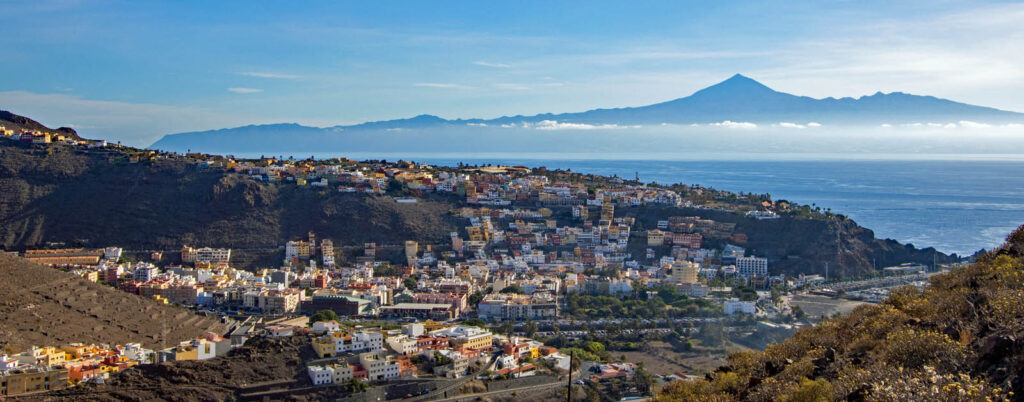
For our first trip we took the bus up into the mountains, an amazing journey of hairpin bends affording magnificent views of the deep ravines ahead and San Sebastián, with Mount Tiede on Tenerife rising through the clouds across the water. We hopped off the bus at Les Roques, huge volcanic needles formed from extra hard magma with the surrounding rock weathering away over the millennia. We then descended down vertiginous slopes into a deep ravine with Playa de Santiago our destination.
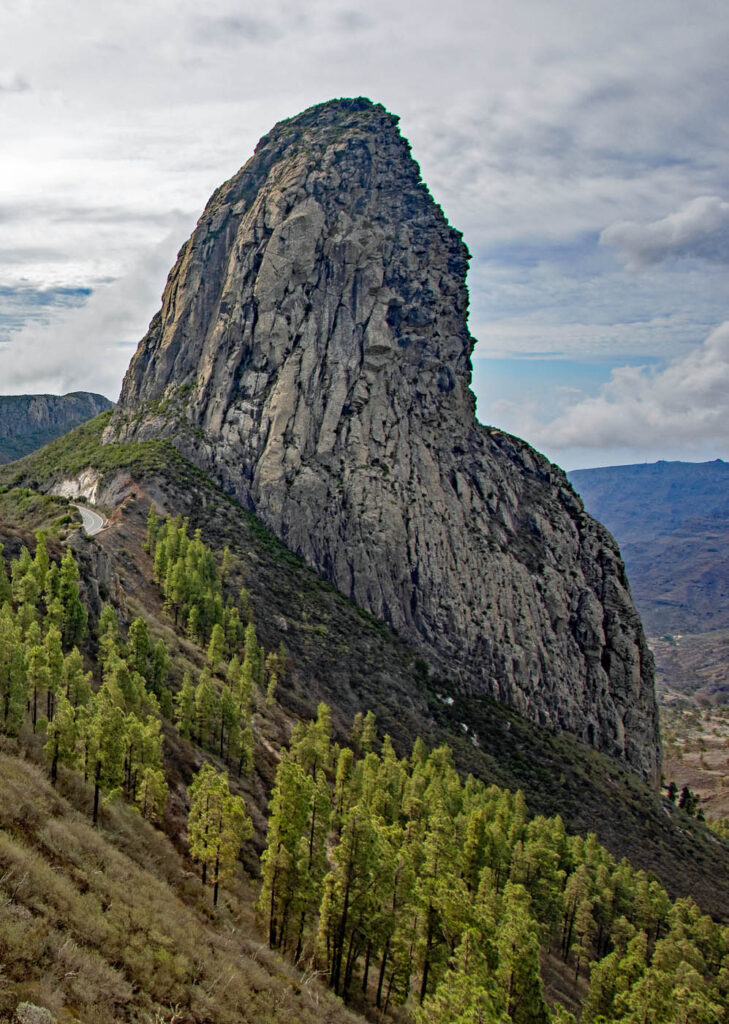
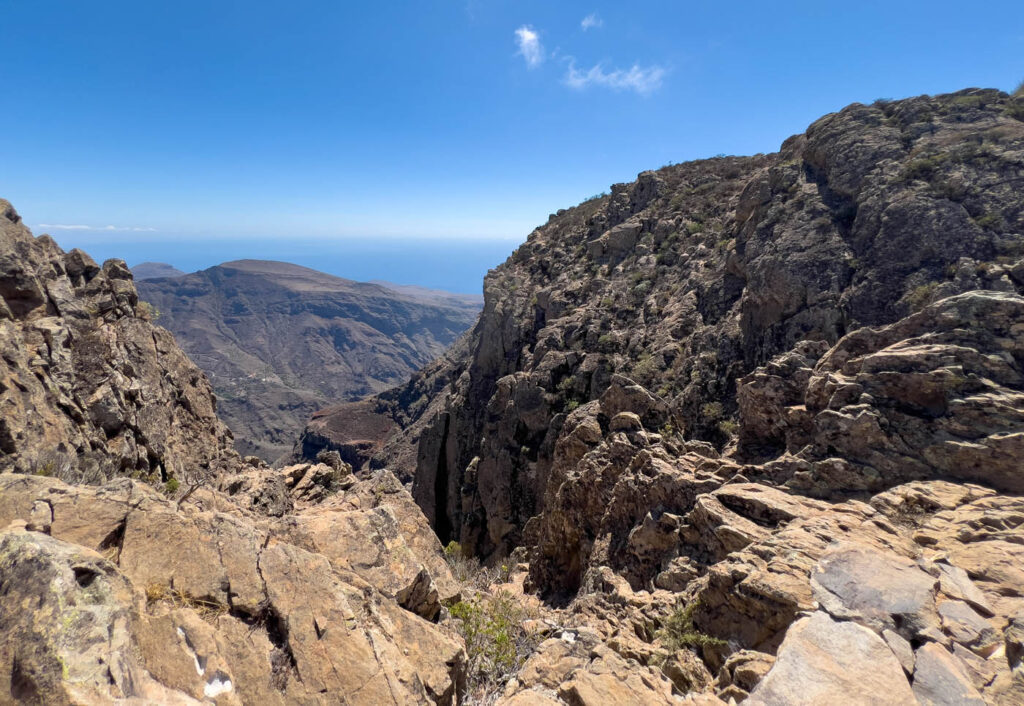
Normally we would relish a walk with no other tourists but this area was so remote that it was quite intimidating. It was not at all well signposted and we took a few wrong turns as we made the huge descent. After five hours, and no sightings of people or animals, we finally came across a small village surrounded by lush foliage, avocado, papaya and mango trees and some colourful additions – a host of quirky decorations including some wheelbarrow folk! Not long afterwards we made it to the beach, too late for lunch but happy that there was cold beer.
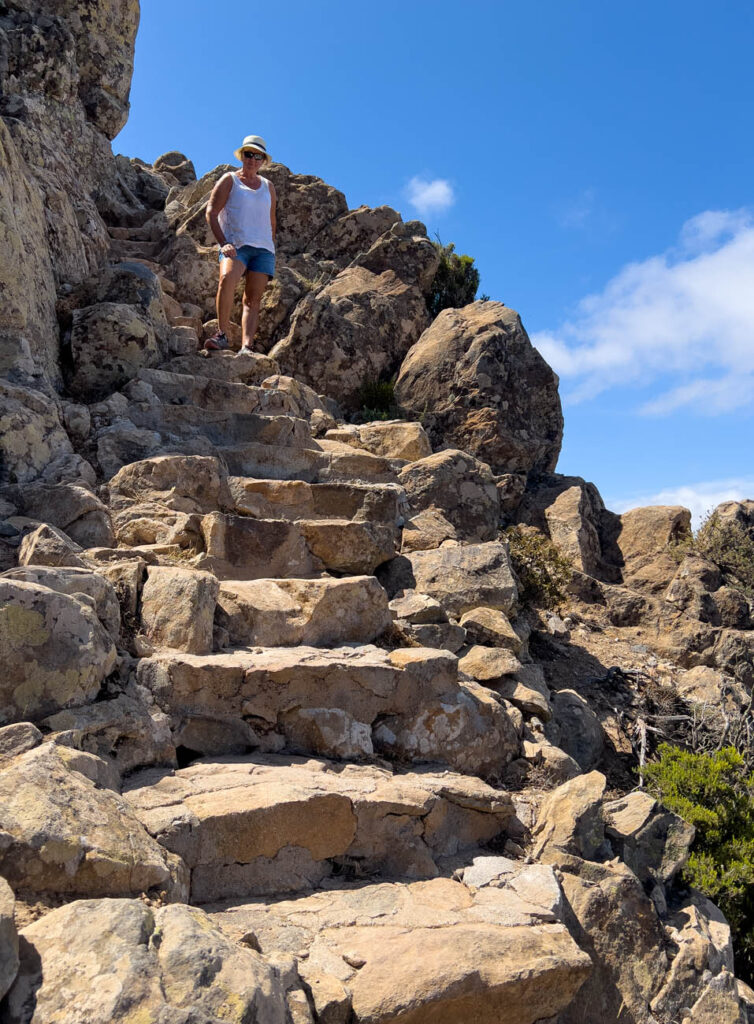
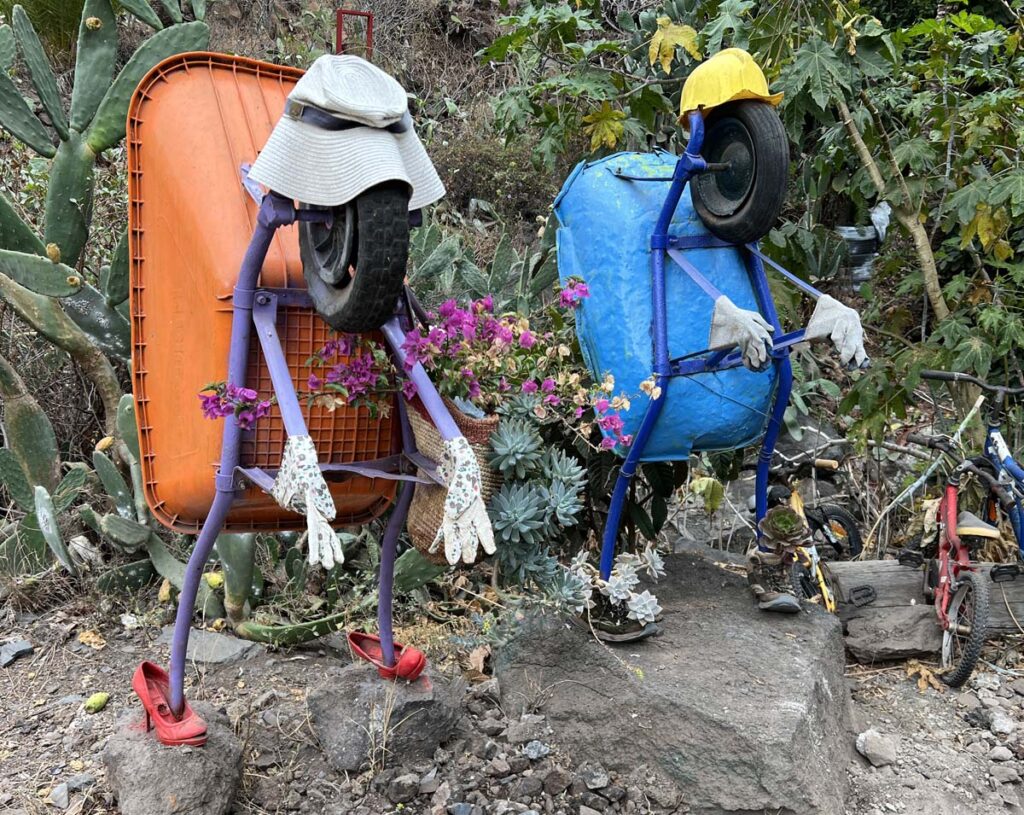
We hired a car to have more access to other parts of the island less well served by bus. The villages and rocky slopes of the north are verdant with tiers of terraces growing tropical fruits alongside vines. Agulo is one of the prettiest villages and we arrived on a festival day which was lovely apart from all the restaurants being full. Along another road we stumbled upon the Chapel of St Francis of Assisi, with a huge sculpture nearby. This is a monument to the ancient whistled language, Silbo Gomera, used to communicate over the deep ravines of the Gomeran terrain. To keep the heritage alive it is still taught in schools in La Gomera.
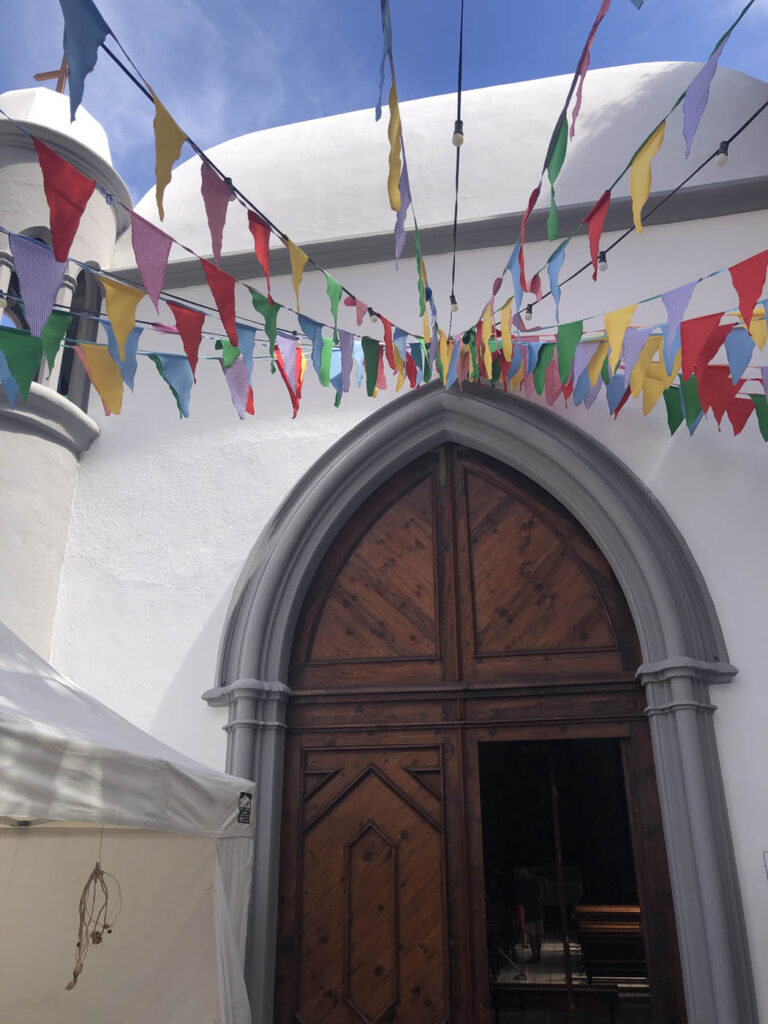

Our travels then took us into the lush forests of the Garajonay National Park. Whilst it is bright sunshine and 28 degrees at sea level, the forests thrive in a cool microclimate shrouded in cloud and supporting beautiful laurel and wax myrtle, their trunks shrouded in lichen and moss. One of these forest walks takes you to the 1484m summit of the island, Alto de Garajonay which gives spectacular views of the island.
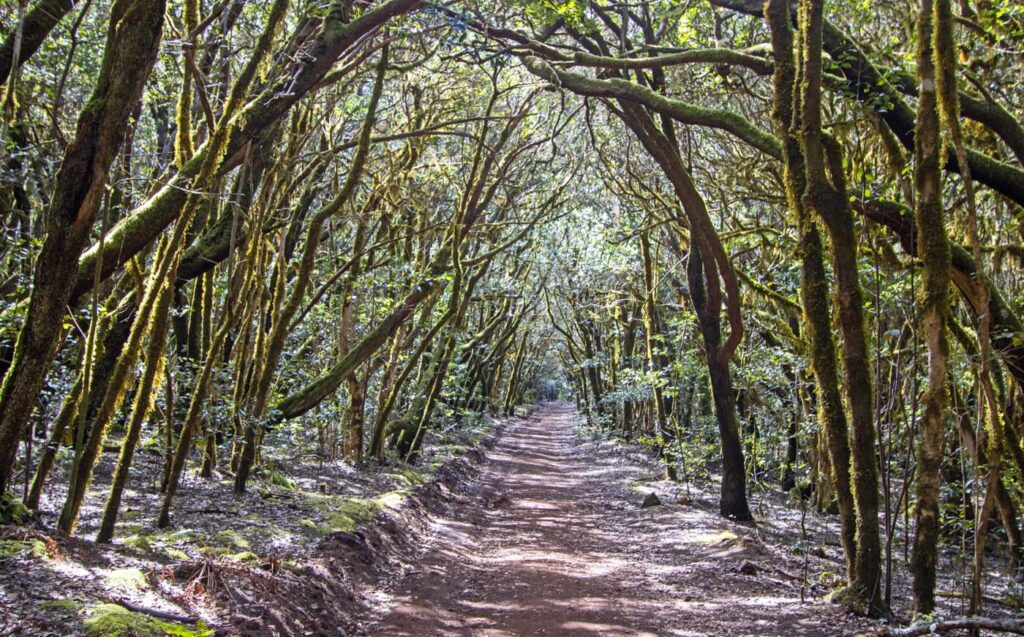
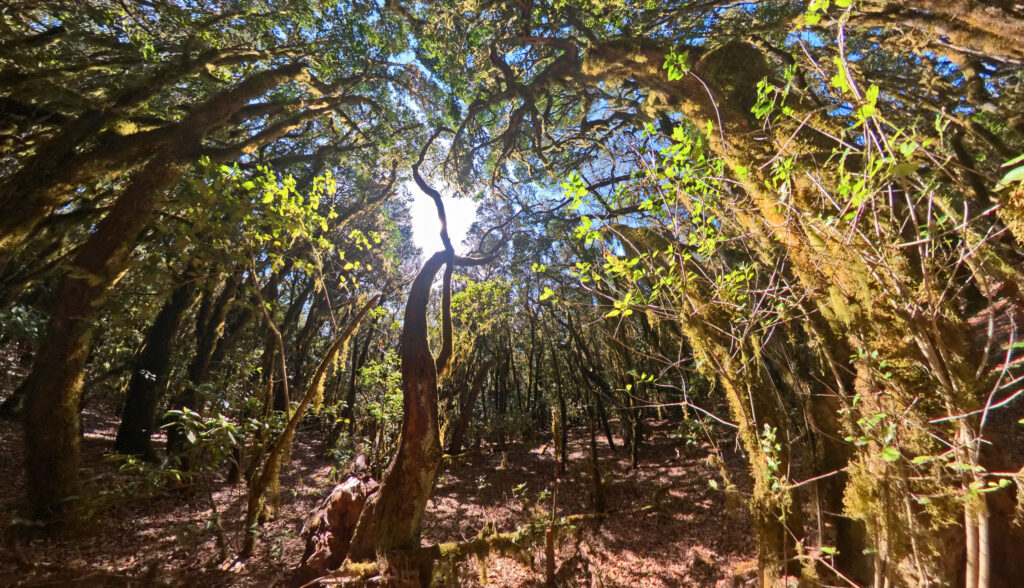
The past few days have been beyond the forests and back in the glaring sun. We climbed to the top of La Fortaleza, a giant volcanic plateau sacred to the ancient islanders. I have no head for heights and felt very exposed as we scrambled up the rocks towards the top where it flattens out. Yesterday was another mega walk in the south western corner of the island and my legs are feeling it today. We started at Arure, walking along the extensive ridge of La Merica with the contrasting colours of iron rich volcanic rock, basalt columns and lime sediment. The views are spectacular, as is the 600m descent into the ravine, down paths and steps carved by the islanders centuries ago.
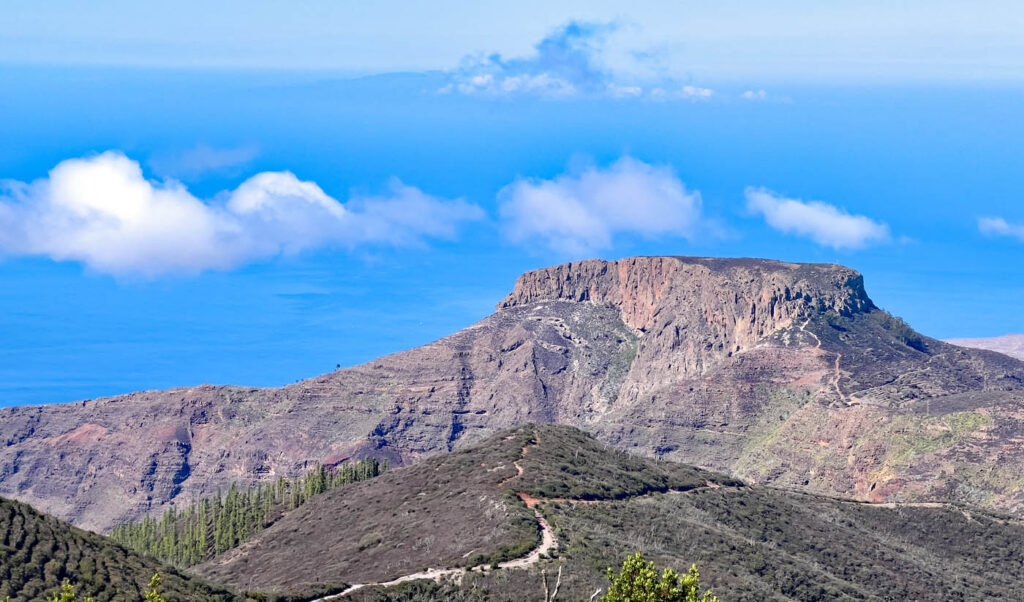
Tomorrow we hope to head to a marina on the south of Tenerife. The winds have picked up over the past few days and we’re uncertain as to what conditions we might have on the crossing. There are wind acceleration zones around the islands as the strong north easterlies are funnelled between, giving much stronger winds than forecast. Hopefully we’ll arrive without any drama.

As usual, it has taken some time to sift through the video footage, but here it is… a short record of our walks in La Gomera. We hope you enjoy the video, or at least will enjoy the music!
Looks terrifying …..well done!
It is terrifying! (ok, just slightly)